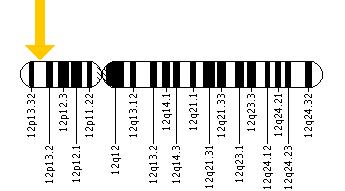Infliximab Helps the Subgroup of Bipolar Depressed Patients Who Faced Adversity in Childhood
At the 2019 meeting of the International Society for Bipolar Disorders, researcher Mike Cosgrove and colleagues described a study of the immune-suppressing drug infliximab in adults with bipolar disorder. The researchers found persistent significant improvements on infliximab only in those with bipolar disorder who also had a history of childhood adversity. Childhood adversity is consistently associated with elevated levels of inflammatory cytokines, and baseline inflammation may be a prerequisite for a positive effect from infliximab, which works by blocking the inflammatory cytokine TNF alpha.
PANS: Sudden OCD or Restrictive Eating Disorder Onset Following an Infection
 At the 2014 meeting of the International Society for Bipolar Disorder, researcher Kiki Chang discussed Pediatric Acute Onset Neuropsychiatric Syndromes (PANS), a newly identified phenomenon in which children suddenly develop obsessive compulsive disorder (OCD) and/or a restrictive eating disorder following an infection or other process that stimulates an immune/inflammatory reaction in the brain. A similar phenomenon, Pediatric Autoimmune Neuropsychiatric Disorders Associated with Streptococcal Infections (PANDAS), was initially identified by Susan Swedo of the National Institute of Mental Health (NIMH) and refers to children (usually under 6–10 years old) who develop OCD and/or tics following a case of strep throat or scarlet fever.
At the 2014 meeting of the International Society for Bipolar Disorder, researcher Kiki Chang discussed Pediatric Acute Onset Neuropsychiatric Syndromes (PANS), a newly identified phenomenon in which children suddenly develop obsessive compulsive disorder (OCD) and/or a restrictive eating disorder following an infection or other process that stimulates an immune/inflammatory reaction in the brain. A similar phenomenon, Pediatric Autoimmune Neuropsychiatric Disorders Associated with Streptococcal Infections (PANDAS), was initially identified by Susan Swedo of the National Institute of Mental Health (NIMH) and refers to children (usually under 6–10 years old) who develop OCD and/or tics following a case of strep throat or scarlet fever.
PANS may have an autoimmune component. In addition to acute onset of OCD and eating restriction, other symptoms include mood episodes (depression, mania), high aggression/irritability, anxiety (particularly separation anxiety), cognitive problems (ADHD, handwriting regression), regressive behaviors, and somatic signs such as sleep difficulties and urinary urgency. Biological abnormalities may include: abnormalities in red blood cell sedimentation rate, elevated C-reactive protein (CRP), high Anti DNase B and/or Antistreptolysin O (ASO) titers (anti-Streptococcus antibodies), mycoplasma IgG or IgM antibodies (signs of some types of pneumonia), ANA (antinuclear antibodies, sign of an autoimmune disease), ferritin (a protein that stores iron), copper, and a panel of tests (the Cunningham Panel) by the company Moleculera Labs that measures antibodies for four neural antibodies (dopamine D1 receptors, dopamine D2 receptors, lysoganglioside (LysoGM-1), and tubulin) and calcium/calmodulin-dependent protein kinase activity (CaMKII).
PANS is three times more likely to affect males than females, and in the Stanford PANS Clinic sample of 50 youth, PANS was associated with strep infections (65%), mycoplasma bacteria (13%), viral or urinary tract infection (58%), and ear and other infections in 16%.
Symptoms included OCD (86%), anxiety (92%), mood disturbance (88%), and aggression (82%).
Treatments include steroids, the immunosuppressant mycophenolate, intravenous immunoglobulin (IVIG), plasma exchange, the tumor necrosis factor blocker infliximab, and sometimes the antibiotic amoxicillin.
Chang also described a case in which a 15-year-old developed minocycline-induced OCD and acute onset of severe mania that included urinary incontinence and was unresponsive to medication. The patient had elevated ANA, anti-thyroid antibodies, and reduced complement C4 proteins, along with elevated antibodies to dopamine D1 and D2 receptors, LysoGM-1, and tubulin.
Genetic Risk Factors for Onset of Bipolar Disorder
A Genetic Risk Factor For Bipolar Disorder: The CACNA1C Gene
In an abstract presented at the 5th Biennial Conference of the International Society for Bipolar Disorders, Sophia Frangou reported on the CACNA1C polymorphism, a genetic variation that has been associated with the risk of developing bipolar disorder in several genome-wide association studies that search for links between genes and illnesses. Frangou found that those people with the genetic variation had increased volume in some parts of the brain, including the right hypothalamus and the right amygdala, and decreased volume in others, including the putamen, as well as alterations in the functional connectivity of different cortical areas.
These data may be related to findings that calcium influx may play a role in bipolar disorder. In people with the genetic variation, the risk allele binds to a subunit of the voltage-dependent calcium channel, which modulates the influx of calcium from the outside to the inside the neuron.
Increased amounts of calcium are consistently found in the white cells and platelets of patients with bipolar disorder compared to controls. Moreover, the drug nimodipine, a dihydropyridine L-type calcium channel blocker, is effective in the prevention of manic and depressive episodes in a subgroup of patients, particularly those with cycling patterns that are ultra-rapid (4+ episodes per month) or ultradian (including a mood switch within a 24-hour period 4+ times per month). A large randomized study of patients with bipolar disorder presented by H.R. Chaudhry at the 2010 meeting of the Society of Biological Psychiatry also found that while lithium was associated with a 50% response rate, the combination of lithium and nimodipine was associated with a 73% response rate, again suggesting the additional efficacy of blocking L-type calcium channels.
Immune Abnormalities May Predict Onset of Bipolar Disorder in Children at High Risk
At the 5th Biennial Conference of the International Society for Bipolar Disorders E. Mesman discussed connections between immunity and bipolar disorder. Mesman and colleagues followed offspring of parents with confirmed bipolar disorder for 12 years and compared them to children in the general population. In the children of bipolar parents they found higher levels of immune markers called cytokines (PTX3 and sCD25) in circulating monocytes, a type of white blood cell. In the children of bipolar parents they also found a high inflammatory setpoint in the monocytes. T-effector and T-regulatory cells were also different in the offspring of bipolar parents.
While these findings were present in children who had already become ill with bipolar disorder, they were also present in those who had yet to experience a mood disorder, suggesting that these immune and inflammatory markers may ultimately be an important risk marker for the onset of bipolar disorder.
Editor’s Note: These are among the first studies suggesting that immune and inflammatory abnormalities may precede the onset of bipolar disorder. Many studies have shown that patients with active bipolar disorder show more inflammation, including increases in inflammatory markers interleukin 1 (IL-1), interleukin 6 (IL-6), C reactive protein (CRP), and tumor necrosis factor alpha (TNFa). The new data are of considerable importance not only because inflammation could serve as a marker of illness onset, but also because inflammation could become a potential target for therapeutics (i.e. using anti-inflammatory and immune-suppressing agents to treat bipolar disorder).



